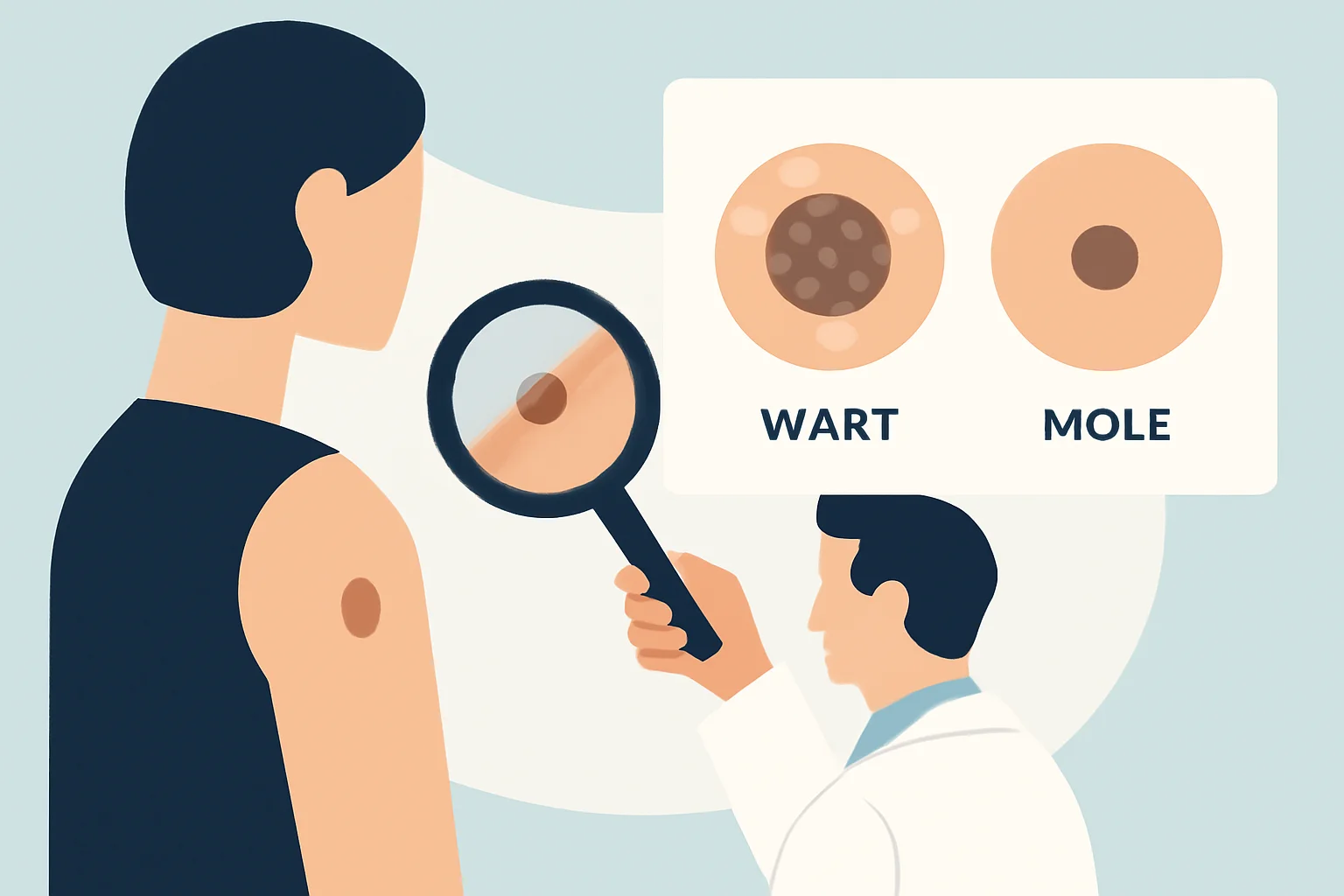
Wart or Mole: When Should You See a Doctor?
A skin can be covered with various lesions that often cause concern. Two common skin issues that are frequently confused are warts and moles. Both are common occurrences, but it is important to understand how to distinguish between them and when to seek medical intervention. Our skin is unique, and the appearance of lesions can often be the result of genetic predisposition, environmental factors, or even viral infections.
The appearance of warts and moles can often be bothersome, especially when they are located in visible areas of our skin. Understanding skin diseases is essential to be aware of their characteristics, forms of appearance, and necessary treatments. In many cases, these lesions are harmless, but in certain situations, medical assistance is required. Below, we will examine in more detail the differences between warts and moles to better understand the health of our skin.
Warts: Characteristics and Types
Warts are small, benign skin growths that appear on the surface of the skin. They are caused by the human papillomavirus (HPV), which infects skin cells and causes them to multiply. Warts are usually rough to the touch and can appear in various shapes and sizes. The most common types include common warts, plantar warts, flat warts, and filiform warts.
Common warts typically appear on the hands and fingers and usually measure 1-2 cm in diameter. Plantar warts are located on the soles of our feet and can often be painful due to the pressure of body weight. Flat warts are usually found on the forehead, face, or hands and are smaller than common warts. Filiform warts are long, thin projections primarily found on the face and neck.
Warts often disappear on their own, but many seek various treatment options such as freezing, laser treatment, or topical medications. It is important to note that warts can be contagious, so it is advisable to avoid direct contact with them, especially in public places like swimming pools or gyms.
Moles: Characteristics and Significance
Moles, also known as melanocytic nevi, originate from the skin’s pigment cells, which give color to the skin. These skin lesions are usually flat or slightly raised and can vary in color from light brown to dark brown or black. The appearance of moles depends on genetics, sun exposure, and other environmental factors.
Moles are generally harmless, but it is important to monitor them as they can sometimes be precursors to skin cancer, particularly melanoma. Moles should be checked regularly, and any changes, such as changes in size, color, or shape, should prompt a visit to a doctor. Doctors use the ABCDE rule to examine moles, which stands for: Asymmetry, Borders, Color, Diameter, and Evolving.
If a mole is asymmetrical, has irregular borders, is multicolored, larger than 6 mm in diameter, or changes over time, it is important to seek medical evaluation. Removal of moles can be done surgically, and tissue samples are often sent for histological examination to rule out cancerous changes.
Differences Between Warts and Moles
Since both warts and moles are skin lesions, many people find it difficult to differentiate between them. The primary difference lies in their cause. While warts are viral in origin, moles are normal variations of skin cells.
Their appearance also differs. Warts are often rough to the touch, round or oval in shape, and usually protrude from the surface of the skin. In contrast, moles typically have a smooth surface and can be flat or slightly raised. Their color varies, but shades of brown and black are the most common.
Furthermore, warts can be contagious, while moles are not. Therefore, it is important to avoid contact with warts, while monitoring moles for changes is sufficient. Their treatment also differs, as warts can be removed using various methods, while mole removal usually requires medical intervention.
Why is it Important to Maintain Skin Health?
Skin health is essential for our overall well-being. The skin is not only the body’s defense system but also the primary interface for our interaction with the external environment. Skin issues, such as warts and moles, can signal other health problems, so it is important to pay attention to them.
To protect the skin, proper skincare, sun protection, and a healthy lifestyle are essential. Excessive sun exposure can increase the risk of skin cancer, so always use sunscreen when outdoors. Additionally, regular dermatological check-ups can help monitor skin conditions and detect early problems.
By maintaining skin health, we can not only reduce the risk of skin issues but also contribute to our mental and emotional well-being. Healthy, beautiful skin boosts confidence and self-assurance, thereby improving our overall mood.
In conclusion, if we encounter any skin problems, such as warts or moles, it is important to consult a professional. Proper diagnosis and treatment are essential for maintaining skin health.
**Warning:** This article does not constitute medical advice. Always consult a doctor for health issues to receive appropriate diagnosis and treatment.

